
Nature Photography
Excellent Adventures
Getting the Most Out of Your Wildlife Adventures
copyright
© 2004 Laurie Excell
print article
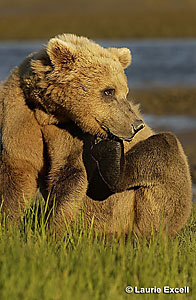 When the envelope arrived in the mail, I tore into it with unbridled enthusiasm.
I had signed up for a safari to photograph Coastal Grizzlies in Alaska and
was expecting all the information to be laid out for me in vivid detail within
the pages of the enclosed packet. What I found instead was a two page intro
letter, some great bear photos and an assignment to write a 500 page article
on the grizzly bear. What the heck? This wasn't supposed to be a writer's workshop.
We were going to a little know location with an experienced wildlife photographer.
It was his job to teach us about our subjects and get us in position for the
great photographs I'm sure we were all expecting to bring home. What did writing
have to do with anything? Well, I set about researching my subject.
When the envelope arrived in the mail, I tore into it with unbridled enthusiasm.
I had signed up for a safari to photograph Coastal Grizzlies in Alaska and
was expecting all the information to be laid out for me in vivid detail within
the pages of the enclosed packet. What I found instead was a two page intro
letter, some great bear photos and an assignment to write a 500 page article
on the grizzly bear. What the heck? This wasn't supposed to be a writer's workshop.
We were going to a little know location with an experienced wildlife photographer.
It was his job to teach us about our subjects and get us in position for the
great photographs I'm sure we were all expecting to bring home. What did writing
have to do with anything? Well, I set about researching my subject.
After a visit to my local bookstore where I bought several books on bear biology and history I sat down and began to read. The information was fascinating. These giants of the wilderness arrive in this world naked, sightless and weighing mere ounces during the cold winter months. They nurse on their mother's fat rich milk until spring when they emerge with her from the den. This was good stuff. I was getting into my stride now. Cubs remain with their mother for about two years during which time she will protect, nourish and teach them to fend for themselves. In their third spring she will chase them away, go into estrus, mate again and start the cycle all over. The more I learned about grizzlies the more my anticipation grew to be out in the wilderness witnessing their behavior firsthand. This was turning into more than just a photo safari to photograph bears. I was learning all about bear biology and behavior as well. It was the beginning of my love affair with nature and wildlife photography.
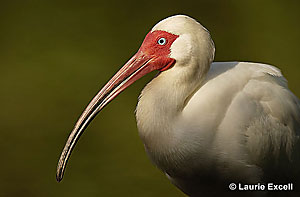 After we had been photographing bears for several days one of my fellow photographers
asked our leader when he was going to critique our articles. His reply astounded
us. He didn't have us write in order to critique our stories. The assignment
was meant to give us all a better understanding of the grizzlies we were going
to be photographing. We couldn't believe it. What a waste of time. All that
energy expended for nothing. Or, was it? Didn't we all come to Alaska with
greater knowledge of bear biology than if we hadn't done the research? None
of us had felt any fear when, on several occasions grizzlies had approached
to within feet of us. In fact we were elated at the close encounter. We kept
on photographing until the bear had passed by. And better yet, our presence
had not disrupted the bear's behavior in any way. He was just going about his
daily business, barely acknowledging our existence.
After we had been photographing bears for several days one of my fellow photographers
asked our leader when he was going to critique our articles. His reply astounded
us. He didn't have us write in order to critique our stories. The assignment
was meant to give us all a better understanding of the grizzlies we were going
to be photographing. We couldn't believe it. What a waste of time. All that
energy expended for nothing. Or, was it? Didn't we all come to Alaska with
greater knowledge of bear biology than if we hadn't done the research? None
of us had felt any fear when, on several occasions grizzlies had approached
to within feet of us. In fact we were elated at the close encounter. We kept
on photographing until the bear had passed by. And better yet, our presence
had not disrupted the bear's behavior in any way. He was just going about his
daily business, barely acknowledging our existence.
Be Prepared
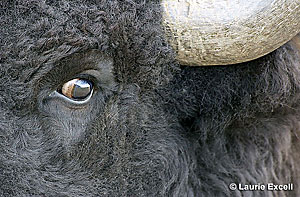 Whether going across town to the local park to photograph birds or to Alaska
to Photograph grizzlies it's important to do the research. Begin with the location.
When is the best time to visit? What is the habitat like? How about the climate?
What is the elevation? How far will you have to hike? What is the terrain like?
What kinds of services are available nearby? Will you be camping or staying
in a motel? Can your destination be reached by car or will you have to fly?
The answers to these and many other questions help in making the decision of
how to pack and what clothing and footwear will work best. It is essential
to come prepared. Comfort is important so that you can concentrate on photography
not on how cold, wet or hungry you are.
Whether going across town to the local park to photograph birds or to Alaska
to Photograph grizzlies it's important to do the research. Begin with the location.
When is the best time to visit? What is the habitat like? How about the climate?
What is the elevation? How far will you have to hike? What is the terrain like?
What kinds of services are available nearby? Will you be camping or staying
in a motel? Can your destination be reached by car or will you have to fly?
The answers to these and many other questions help in making the decision of
how to pack and what clothing and footwear will work best. It is essential
to come prepared. Comfort is important so that you can concentrate on photography
not on how cold, wet or hungry you are.
Research Your Subject
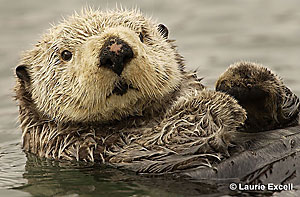 Next, learn as much as possible about the wildlife. Knowing the basic biology
of a subjects helps to better understand their behavior and to anticipate their
movements. What are their feeding patterns? How about their sleeping habits?
What time of day are they most likely to be active? Are they habituated to
human presence? How closely will they let you approach? What kind of behavior
do they display when they feel threatened or angry? Are they more likely to
retreat or attack? It's essential to know these things both for your safety
and that of the wildlife. I do not ever want to cause the animal any distress
or to divert it from its normal activities for the sake of a picture. It could
mean the difference between life and death.theirs or yours. It also means the
difference between coming home with "the" image or lot's of "almost" images.
Next, learn as much as possible about the wildlife. Knowing the basic biology
of a subjects helps to better understand their behavior and to anticipate their
movements. What are their feeding patterns? How about their sleeping habits?
What time of day are they most likely to be active? Are they habituated to
human presence? How closely will they let you approach? What kind of behavior
do they display when they feel threatened or angry? Are they more likely to
retreat or attack? It's essential to know these things both for your safety
and that of the wildlife. I do not ever want to cause the animal any distress
or to divert it from its normal activities for the sake of a picture. It could
mean the difference between life and death.theirs or yours. It also means the
difference between coming home with "the" image or lot's of "almost" images.
Equipment
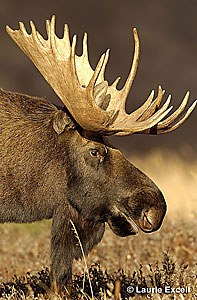 Once you know all about your chosen location and the wildlife you are likely
to encounter it's time to begin to think about what equipment to take. In my
MP-3 Photo Backpack there are always two Nikon D2h bodies, a super wide angle
zoom AF-S 12-24 and a mid-range zoom AF-S 24-120 VR. These take up little space
in the bag and allow me to photograph scenics or macros. In the moderate telephoto
range, I pack AF-S 70-200 VR. Finally, for the "big guns", I use an AF-S 200-400
VR for big game and a 600mm f4 (in my MP-1) for birds and smaller mammals as
well as both the 1.4X and 2X tele-converters. I carry at least one flash, SB-800,
with a light modifier and external battery pack to use for fill flash or to
add a catch light to the subject's eye, plus enough batteries and compact flash
cards to get me through at least two full days of shooting. If the action is
great I don't want to have to worry about stopping to recharge my batteries
or to upload my cards and miss some great opportunities. A Gitzo 1548 carbon
fiber tripod with a Wimberley head is great for support and ease of panning
for my long lenses and the Gitzo 1348 carbon fiber tripod with the G1377M ball
head works well for scenics. In addition, there is always a lens cleaning cloth,
a wrench to tighten my quick release plates and various assorted tools tucked
away in pockets. With this assortment of gear I am ready for anything that
comes my way.
Once you know all about your chosen location and the wildlife you are likely
to encounter it's time to begin to think about what equipment to take. In my
MP-3 Photo Backpack there are always two Nikon D2h bodies, a super wide angle
zoom AF-S 12-24 and a mid-range zoom AF-S 24-120 VR. These take up little space
in the bag and allow me to photograph scenics or macros. In the moderate telephoto
range, I pack AF-S 70-200 VR. Finally, for the "big guns", I use an AF-S 200-400
VR for big game and a 600mm f4 (in my MP-1) for birds and smaller mammals as
well as both the 1.4X and 2X tele-converters. I carry at least one flash, SB-800,
with a light modifier and external battery pack to use for fill flash or to
add a catch light to the subject's eye, plus enough batteries and compact flash
cards to get me through at least two full days of shooting. If the action is
great I don't want to have to worry about stopping to recharge my batteries
or to upload my cards and miss some great opportunities. A Gitzo 1548 carbon
fiber tripod with a Wimberley head is great for support and ease of panning
for my long lenses and the Gitzo 1348 carbon fiber tripod with the G1377M ball
head works well for scenics. In addition, there is always a lens cleaning cloth,
a wrench to tighten my quick release plates and various assorted tools tucked
away in pockets. With this assortment of gear I am ready for anything that
comes my way.
Patience
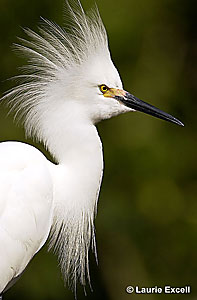 Ok, you've done your research, you are dressed for the conditions and have
all the right gear, now you're ready to photograph. What happens if the wildlife
or the weather doesn't cooperate? Wildlife photography is not all glory, moving
from one location to another, jumping out of the car, setting up and grabbing
frame filling images of amazing subjects in gorgeous light time after time.
Many hours and days can go by before the perfect moment happens. Sometimes
it does not happen at all. What do you do when you expend all the energy to
get to a location and upon arriving, the weather is lousy, the wildlife is
nowhere to be seen? Do you go back to the motel to mope until the weather clears?
Or, do you wait it out hoping the storm will pass, the light will get better
and your subjects will magically appear? I vote for the second choice. Any
day out in nature is better than being cooped up in the office or a motel room.
If you wait it out, you are more likely to get the shot. If there is no wildlife
to be found, most photographers might wait for a bit, fidgeting and fretting
for awhile, then they will move on, looking for greener pastures. While they
may get lucky now and then chasing rainbows, more likely than not they will
go home with mediocre images or empty handed. Yes, luck happens but it seems
to happen more frequently to those who put in the time and have the patience
to wait for the weather to clear or the wildlife to appear.
Ok, you've done your research, you are dressed for the conditions and have
all the right gear, now you're ready to photograph. What happens if the wildlife
or the weather doesn't cooperate? Wildlife photography is not all glory, moving
from one location to another, jumping out of the car, setting up and grabbing
frame filling images of amazing subjects in gorgeous light time after time.
Many hours and days can go by before the perfect moment happens. Sometimes
it does not happen at all. What do you do when you expend all the energy to
get to a location and upon arriving, the weather is lousy, the wildlife is
nowhere to be seen? Do you go back to the motel to mope until the weather clears?
Or, do you wait it out hoping the storm will pass, the light will get better
and your subjects will magically appear? I vote for the second choice. Any
day out in nature is better than being cooped up in the office or a motel room.
If you wait it out, you are more likely to get the shot. If there is no wildlife
to be found, most photographers might wait for a bit, fidgeting and fretting
for awhile, then they will move on, looking for greener pastures. While they
may get lucky now and then chasing rainbows, more likely than not they will
go home with mediocre images or empty handed. Yes, luck happens but it seems
to happen more frequently to those who put in the time and have the patience
to wait for the weather to clear or the wildlife to appear.
Weather permitting; set up your camera gear with your biggest lens mounted on the tripod and a moderate telephoto on the other body hanging by the strap nearby. Check all the settings, make sure there is a fresh battery and a new card installed. Now, make yourself comfortable and settle in to enjoy being out in nature, the sights, the sounds, the smell. Being fully prepared helps to insure that you capture the image no matter how fleeting the moment. And sometimes that is all it is. a fleeting moment in time when everything comes together, an outstanding subject, great light and a perfect setting captured for all time with the click of the shutter.
Excell Nature Photography
PO Box 6478
Portland OR 97228
Copyright © 2001-2004 Laurie
Excell
All Rights Reserved
Web Design © 2004 Digital Imaging Group
Contact Webmaster